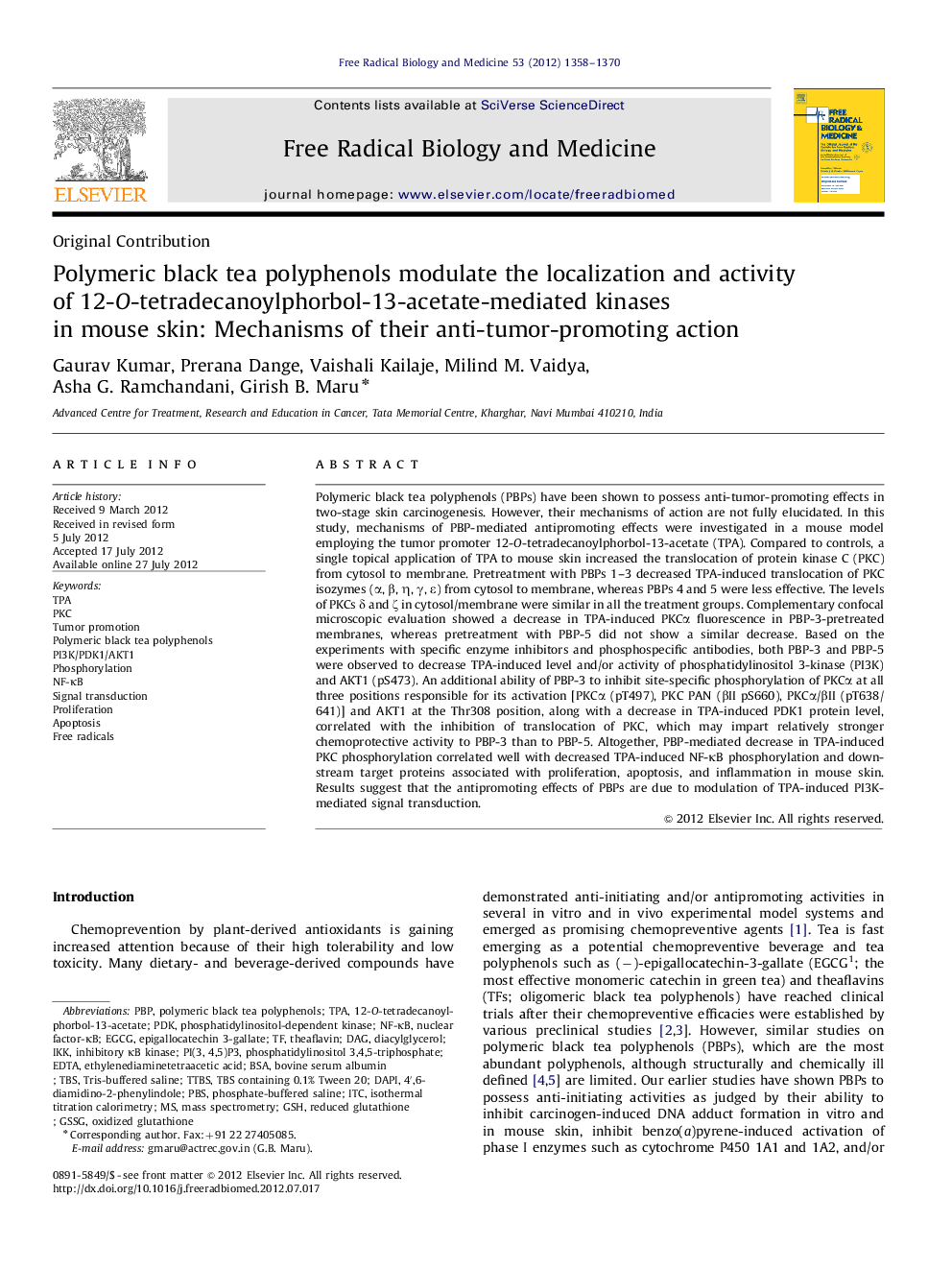| کد مقاله | کد نشریه | سال انتشار | مقاله انگلیسی | نسخه تمام متن |
|---|---|---|---|---|
| 1908656 | 1046677 | 2012 | 13 صفحه PDF | دانلود رایگان |

Polymeric black tea polyphenols (PBPs) have been shown to possess anti-tumor-promoting effects in two-stage skin carcinogenesis. However, their mechanisms of action are not fully elucidated. In this study, mechanisms of PBP-mediated antipromoting effects were investigated in a mouse model employing the tumor promoter 12-O-tetradecanoylphorbol-13-acetate (TPA). Compared to controls, a single topical application of TPA to mouse skin increased the translocation of protein kinase C (PKC) from cytosol to membrane. Pretreatment with PBPs 1–3 decreased TPA-induced translocation of PKC isozymes (α, β, η, γ, ε) from cytosol to membrane, whereas PBPs 4 and 5 were less effective. The levels of PKCs δ and ζ in cytosol/membrane were similar in all the treatment groups. Complementary confocal microscopic evaluation showed a decrease in TPA-induced PKCα fluorescence in PBP-3-pretreated membranes, whereas pretreatment with PBP-5 did not show a similar decrease. Based on the experiments with specific enzyme inhibitors and phosphospecific antibodies, both PBP-3 and PBP-5 were observed to decrease TPA-induced level and/or activity of phosphatidylinositol 3-kinase (PI3K) and AKT1 (pS473). An additional ability of PBP-3 to inhibit site-specific phosphorylation of PKCα at all three positions responsible for its activation [PKCα (pT497), PKC PAN (βII pS660), PKCα/βII (pT638/641)] and AKT1 at the Thr308 position, along with a decrease in TPA-induced PDK1 protein level, correlated with the inhibition of translocation of PKC, which may impart relatively stronger chemoprotective activity to PBP-3 than to PBP-5. Altogether, PBP-mediated decrease in TPA-induced PKC phosphorylation correlated well with decreased TPA-induced NF-κB phosphorylation and downstream target proteins associated with proliferation, apoptosis, and inflammation in mouse skin. Results suggest that the antipromoting effects of PBPs are due to modulation of TPA-induced PI3K-mediated signal transduction.
Figure optionsDownload high-quality image (277 K)Download as PowerPoint slideHighlights
► Polymeric black tea polyphenols (PBPs) possess mouse skin anti-tumor-promoting effects.
► The tumor promoter TPA induces protein kinase C (PKC) phosphorylation and translocation to the membrane.
► PKC phosphorylation is catalyzed by PDK1 and/or AKT.
► PBP-3 reduces TPA-induced PKC phosphorylation/translocation via the PI3K/PDK/AKT pathway.
► Modulation of NF-κB/downstream target proteins by PBP results in antipromoting effects.
Journal: Free Radical Biology and Medicine - Volume 53, Issue 6, 15 September 2012, Pages 1358–1370